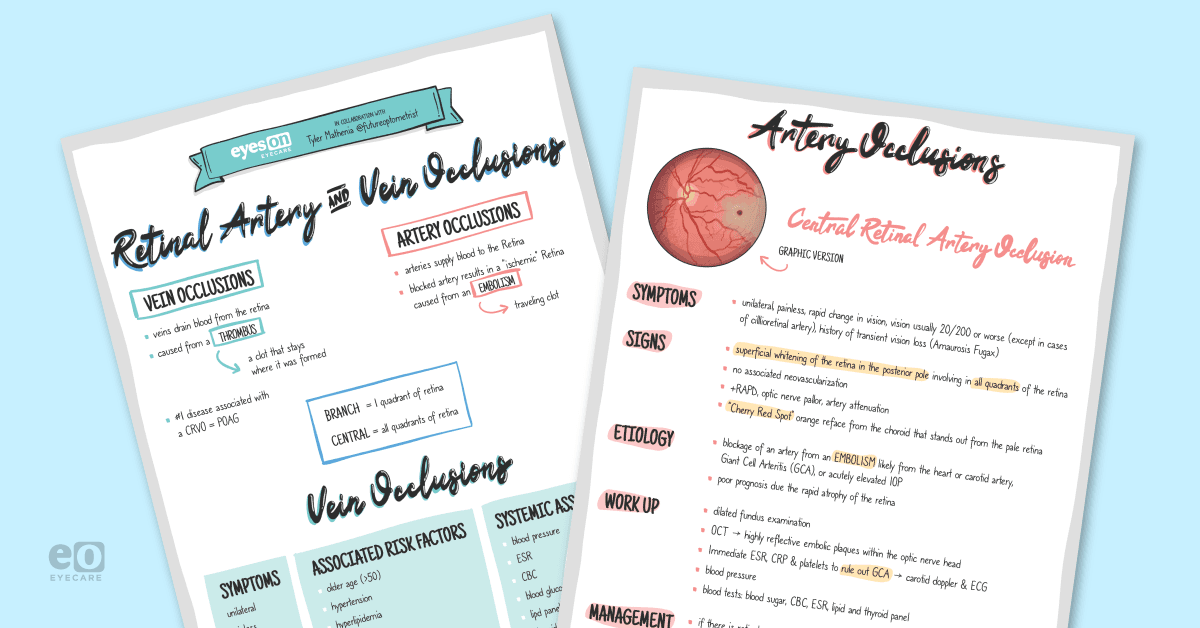
Download the study guide

Here’s what’s included:
- Signs and symptoms of CRVO, BRVO, CRAO, and BRAO
- Etiology of CRAO and BRAO
- Work-up checklist (dilated fundus examination, OCT, blood pressure, and more)
- Management and follow-up for each
What are retinal artery and vein occlusions?
Central Retinal Vein Occlusion (CRVO)
- Retinal hemorrhages in all four quadrants of the retina due to thrombus
- Dilated tortuous retinal vessels
- Glaucoma is the most common ocular condition associated with CRVO
- CWS, disc edema & hemorrhages, macular edema, NVD, NVI, NVA & NVE
Branch Retinal Vein Occlusion (BRVO)
- Retinal hemorrhages in one quadrant of the retina due to thrombus
- Compression of a vein at an artery/vein crossing point superior temporal quadrant most common
- CWS, retinal edema, dilated & tortuous retinal veins, narrowing of adjacent arteries, retinal neovascularization
Central Retinal Artery Occlusion (CRAO)
- Superficial whitening of the retina in the posterior pole involving in all quadrants of the retina
- No associated neovascularization
- +RAPD, optic nerve pallor, artery attenuation
- “Cherry Red Spot” orange reface from the choroid that stands out from the pale retina
Branch Retinal Artery Occlusion (BRAO)
- Superficial whitening along the distribution of a branch retinal artery, located in one quadrant of the retina
- No associated neovascularization
Different kinds of emboli
Download the study guides and get to work! 💪
Tyler Mathenia is a third-year optometry student at Chicago College of Optometry. Find him on Instagram at @futureoptometrist, and check out his shop on Etsy for cool optometry stickers and study guides!
